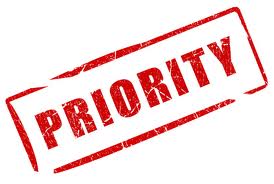I was prompted to share the following case study as a result of the feedback I got from my last post 5 Tips from top CEOs on how to prioritize, as many wanted to get more information on the dashboard I referred to there. So, here goes with the case study:
“To be honest, I am not totally clear what are my important things to do now that I am CEO”
That is a direct quote from a client who I have been working with for a few months now. This client, who is based in the USA, had been referred to me by a client in Ireland – the wonders of Skype and Google Hangout!
For the purpose of this article, lets call him Tom (obviously not his real name!) and I thought the work we did together was worth sharing with others.
Tom felt that his issue was time management as he continuously felt overwhelmed and not getting the important things done. My instant reaction to anyone who states that their challenge is time management is always to test that.
I firmly believe that we do not manage time, we manage ourselves, but we blame time management when we should be looking in the mirror.
So, I asked Tom to share what were the important things to do on his list.
The answer to his challenge was in his response. He shared his list with me and it ran to over 30 items! It is no wonder he was suffering from overwhelm and frustration.
The consequence of his list was that Tom was splitting himself into little pieces and sharing that around the organization, and was simply dipping in and out of situations. There was no real focus to his work.
So, we set about creating his dashboard of the important things to do.
Research has clearly proven that for any business, no matter how large or small, there are only 5/6 things that need to be on your dashboard to ensure that your focus is on the right things.
Those 5/6 items will be different depending on your role – whether it is CEO, CFO, Sales Director or COO.
So, back to Tom – what are his important things to do? What must be on his dashboard?
Having worked through a process we ended up with 5 items that would shape his planning and solve his “time management” challenge. They are:
- Figures: Tom will now review the top line figures on a weekly basis. We agreed what figures he will be focusing on and developed reports to keep a focus on those figures alone.
- Strategy implementation: We created reports that clearly showed progress on the implementation of the key strategic initiatives, where any deviation was occurring, and the remedial action being taken. Again, the focus was on the key initiatives.
- Tom’s team: Tom now has a weekly meeting with his direct reports that lasts no more than 45 minutes to update him on any key issues. We also agreed that every month Tom will have individual coaching sessions with his people – and the emphasis is on coaching!
- Organizational culture: We all know that having the culture has a direct impact on the performance of a business, so Tom needs to spend time on how he influences the culture of his organization, and how that culture is cascaded down the business.
- External market: As CEO Tom must spend time analyzing and researching the market so that he is fully aware of the external environment he and his business is operating in.
Tom committed to focus on these 5 items as his important things to do for a month, and his schedule reflected that. (Will tell you how we did that in another piece, but it worked wonders for him!)
His results? Well, Tom is now clearer on what is important and what is not. His diary is worked around these 5 key items and he is now feeling a lot less overwhelmed and his “time management” has greatly improved. He really feels much more in control, and the feedback from his team has been so positive.
Most importantly, Tom is now operating as a much more effective CEO.
I am working with quite a number of CEOs right now to help them get absolute clarity on their dashboard and how to make it really work for them. I would love to help you too, so please contact me here and we will get you focused on what you need to be focused on.
